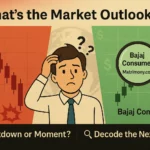PSU Bank Index Crash: What’s Behind the Sudden Drop?
Imagine waking up and realizing your favorite bank stock has taken a nosedive. No, it’s not a nightmare; it’s exactly what investors in PSU banks faced today. On May 6, 2025, the PSU Bank Index saw an alarming drop of nearly 5%. Investors scrambled, analysts debated, and everyone wondered—why the sudden fall?
Let’s break down the main reasons behind this chaos.
Bank of Baroda’s Earnings Miss Triggered Panic
When giants tumble, everyone feels the ground shake. That’s exactly what happened with Bank of Baroda (BoB). The bank posted disappointing Q4 results, with net interest income falling by 6.6% year-on-year, and margins shrinking sharply from 3.45% to 3.02%.

Unsurprisingly, investors reacted harshly, sending BoB’s share price plunging over 10%, making it the biggest loser in the PSU banking space today. This drastic fall pulled down sentiment across the entire PSU Bank Index.
Supreme Court Shocker: JSW Steel Resolution Rejected
Just when PSU banks thought the worst news was earnings-related, the Supreme Court dropped another bombshell. It rejected JSW Steel’s 2019 resolution plan for Bhushan Power and Steel Ltd. (BPSL), calling it illegal and mandating liquidation of assets.
Why does this matter to PSU banks? Well, major PSU lenders including SBI, PNB, Canara Bank, and again, Bank of Baroda, had substantial loans stuck with BPSL. The court’s decision essentially means these banks might need to write down these loans, directly impacting their bottom lines. Naturally, this uncertainty caused investors to sell first and ask questions later.
Weak Global Sentiments Added Fuel to Fire
It wasn’t just local drama hurting the PSU Bank Index. Global markets were jittery too. Broader market indices, including Sensex and Nifty 50, closed the day lower (Sensex down 0.19%, Nifty down 0.33%), reflecting growing caution.
What triggered this caution globally? Investors are increasingly worried about potential policy changes from the U.S. Federal Reserve. Any tightening in global liquidity impacts emerging markets like India, and financial stocks usually take the first hit.
PSU Banks: Underperformers of 2025?
It’s not a one-day event. The PSU Bank Index has struggled throughout this year. The average return of PSU banks in 2025 has been about -9%, a stark underperformance compared to Nifty Bank’s 8% and Nifty’s 2.5% gains. Even with decent earnings reports and supportive economic indicators, these banks simply haven’t found investor love this year.
What gives? Investor sentiment towards PSU banks remains cautious due to persistent asset quality worries, operational inefficiencies, and regulatory setbacks. Today’s events just compounded existing concerns.
Top PSU Bank Losers Today
Here’s a quick snapshot of today’s top losers within the PSU banking space:
| Company | CMP (₹) | Change (%) | Volume |
|---|---|---|---|
| Bank of Baroda | 222.15 | -10.83% | 53.57m |
| Canara Bank | 92.09 | -5.22% | 27.35m |
| PNB | 94.50 | -4.93% | 26.98m |
| Federal Bank | 186.75 | -2.49% | 5.93m |
| IDFC First Bank | 65.49 | -2.28% | 29.76m |
| SBI | 772.95 | -2.16% | 18.86m |
Is It All Doom and Gloom? Not Exactly!
Amid all the negativity, analysts see some rays of hope. Banks like SBI and even Bank of Baroda (despite today’s beating) could offer attractive long-term value at lower prices. With favorable policy actions, improving asset quality, and an economic upswing, PSU banks might stage a comeback. However, patience and careful stock selection will be crucial.
Your Action Plan: Navigate Wisely
For investors eyeing PSU banks, today’s drop might present opportunities, but tread carefully:
- Short-term traders should expect volatility and act only with clear technical signals.
- Long-term investors may selectively accumulate fundamentally strong PSU banks on significant corrections.
- Always consider asset quality and operational metrics before investing—banks with healthier balance sheets tend to rebound quicker.
Bottom Line: Stay Alert, but Don’t Panic
Today’s crash in the PSU Bank Index serves as a stark reminder that banks are vulnerable to both internal challenges and external shocks. While the fall might be unsettling, it also reminds investors to stay informed and adapt quickly.
After all, investing in stocks—especially banks—is not a straight line but rather a rollercoaster ride. The key is knowing when to hold tight and when to let go.
Disclaimer:
This content is purely informational and educational. Always conduct your own research or consult a financial advisor before investing.




